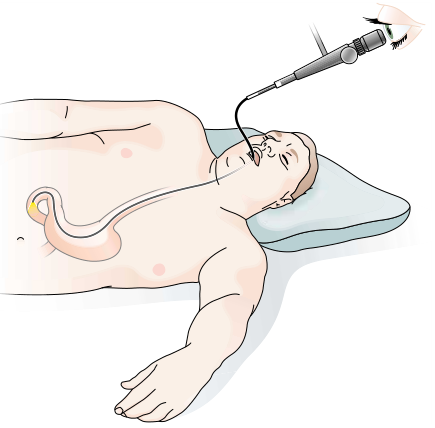An ulcer is a lesion of the skin or a mucous membrane marked by inflammation and tissue damage. Ulcers caused by the damaging action of gastric, or peptic, juices on the lining of the GI tract are termed peptic ulcers. Most peptic ulcers appear in the first portion of the duodenum. The origins of such ulcers are not completely known, although infection with a bacterium, Helicobacter pylori, has been identified as a major cause. Heredity and stress may be factors as well as chronic inflammation and exposure to damaging drugs, such as aspirin, or to irritants in food and drink. Current treatment includes the administration of antibiotics to eliminate H. pylori infection and use of drugs that block the action of histamine, which stimulates gastric secretion. Ulcers may lead to hemorrhage or to perforation of the digestive tract wall.
Ulcers can be diagnosed by endoscopy (Fig. 1) and by radiographic study of the GI tract using a contrast medium, usually barium sulfate. A barium study can reveal a variety of GI disorders in addition to ulcers, including tumors and obstructions. A barium swallow is used for study of the pharynx and esophagus; an upper GI series examines the esophagus, stomach, and small intestine.

FIGURE 1. Patient undergoing gastroscopy.
责任编辑:admin
上一篇:英语文章阅读——Manifestations of Photoageing in Cultured Skin-Derived Cells
下一篇:医学文章阅读——Manifestations of Intrinsic Ageing in Cultured Skin-Derived Cells

微信公众号搜索“译员”关注我们,每天为您推送翻译理论和技巧,外语学习及翻译招聘信息。